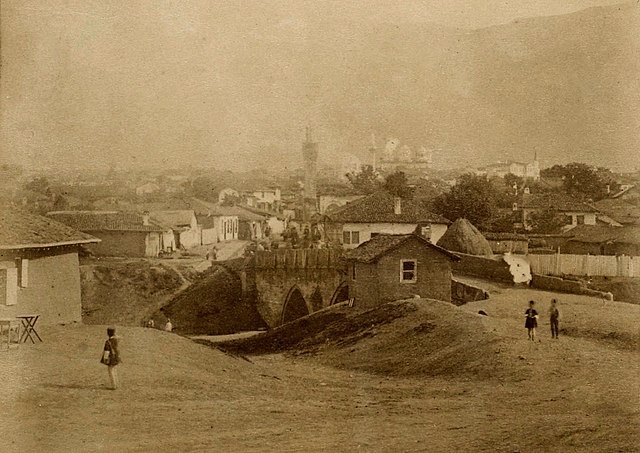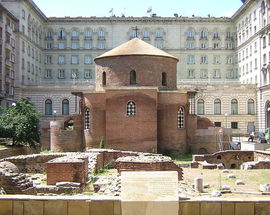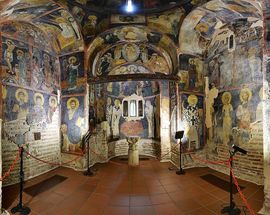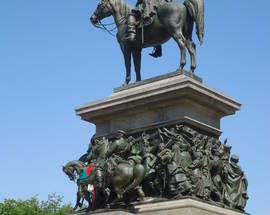A brief timeline...
6000 BCE: Neolithic Settlements on the territory of present day Bulgaria
8th century BCE: The Thracian settlement of ‘Serdica’ is established on the site of present-day Sofia.
29 BCE: Serdica becomes part of the Roman Empire
809: The city is included in the Bulgarian state during the reign of Khan Krum, and renamed ‘Sredets’
855: Cyril and Methodius create the first slavic alphabet
1018: Falls to the Byzantine Empire renamed ‘Triaditsa’
1376: Sophia gets its present day name from the Church of St.Sophia
1385: Sofia besieged under Ottoman rule
1878: Liberation from Ottoman rule; Sofia becomes the capital of the newly established Principality of Bulgaria.
1908: The Kingdom of Bulgaria
1944: Bulgaria is occupied by Soviet forces during World War II, and the Bulgarian Communist Party gains power.
1989: The fall of the Berlin Wall and the subsequent collapse of communism in Eastern Europe
1990: Bulgaria transitions to democracy, and Sofia becomes the capital of the Republic of Bulgaria.
2004: Bulgaria becomes a fully fledged member of NATO
2007: Bulgaria becomes a member of the EU
Present day: Sofia continues to be the capital and largest city of Bulgaria, serving as a cultural, economic, and administrative centre, with a population around 1.2 m.(Bulgaria total 6.8 million)

Capital of Bulgaria
Sofia became capital of Bulgaria as recently as 1879, usurping the position from Veliko Tarnovo after six hundred years.Sofia was felt to possess a strategic location and the change of capital marked the end of Bulgaria’s dark ages under Ottoman rule. When it became capital, Sofia was a muddy, underdeveloped town of just 12,000 inhabitants, something akin to a large, open-air market. Writers talk of how the city’s inhabitants attended the first royal ball dressed in woollen socks and baggy Turkish pants.
The city’s historic buildings date from the turn of the century up until the 1930s, when there was a rush to bring the city up to date and turn it into a modern European capital.
Evidence has been found that Sofia was inhabited as early as 7000 years ago. Thracian and Roman remains can still be seen dotted around the city: in the underpass in front of the presidency; behind the Military Club, and behind the Sheraton hotel. Sofia’s thermal springs meant that it was always an attractive place for settlement. There are springs in the city center, Gorna Banya, Knyazhevo, Bankya and Ovcha Kupel.
Thracian and Roman rule
Under Thracian and later Roman rule Sofia was known as Serdika, from the middle of the 6th century the Byzantines renamed it Triaditsa and from the 9th century onwards during the First Bulgarian Kingdom it took on the Slavonic name of Sredets. The city finally became known as Sofia from the beginning of the 15th century taking on the name Sofia, from St Sofia Church (wisdom).Sofia’s coat of arms was designed in 1900. The City’s motto “Raste no ne stare” (grows but does not age) was added a year later.








Comments